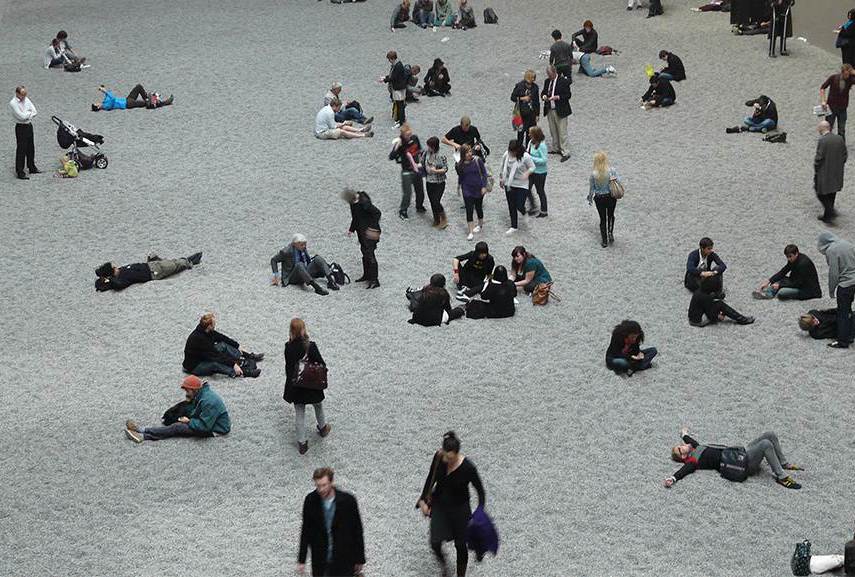by Julie Krejčí
Artistic value has always been the at the centre of debate when it comes to understanding why art is such a vital part of our lives. Scholars have not been able to come up with a definitive answer, perhaps because there is not supposed to be one. Isn’t one of the most unique and desirable qualities of art to be free-flowing and allow for those parts of us that cannot be described by words to be expressed and shared amongst ourselves? Today’s article isn’t here to discuss this impossible question, but rather to focus on one of the sides of the debate on artistic value. Although explanations vary, there are two main camps that address artistic value – aestheticism and pluralism. Proponents of aestheticism argue that it is the aesthetic value that contributes to the artistic value, whereas proponents of pluralism suggest that it comprises of a variety, including aesthetics but also the ethical and political value of art. Today, I stand behind the second explanation for the purpose of a constructive analysis of socially engaged art.
Arguably all art is social, as the premise of art is its connection and interaction with others. However, the basis of socially engaged art is a social interaction that proclaims itself as art. It depends on the engagement of art and its interaction with society, mostly for the sake of addressing moral, ethical or political situations. The new term for socially engaged art – social practice – goes even further to democratise the construct of art, separating the artist as one who work with society as his art form. This is not an entirely new concept, as it came to be known in the United States in the late 1960s with the rise of feminist education theory, the exploration of performance by Charles Grain among other influences. It is worth noting that scholars have focused on socially engaged art in the West, primarily in the United States, as its production of art had dominated the Western world. My analysis will thus not be complete, as it excludes socially engaged art from the former Eastern bloc as well as the Global South due to the lack of scholarly literature on these areas.
During the early 1970s we see a shift from art as an isolated object to the interaction of art with its environment. This can be seen in Mierle Laderman Ukele’s pieces such as “Maintenance Art” performance (1973), which labeled the cleaning of an art museum as an artwork itself. Now, at this point many people tend to lose their interest in art arguing “they could do it themselves” or “that is not art”. The debate of whether something is art or not is simply irrelevant in this article, as it is not the terminology that is the focus here. Regardless, it is vital to have the same notion of what is art to continue forward with this discussion. For the sake of this article, art is anything that the artist proclaims as art. The next generations of artists then took this concept of social interaction even further and taught to use art in order to expose the political conditions of artists. This wave is known as the “institutional critique” which inspired the use of socially engaged art for political and ethical purposes – a clear example is the use of locally engaged art for activist purposes.
In today’s globalised world, with consumerism at its core, the question begs itself: what is the purpose of art? Is it material gain through investing in the art market or is the opposite, a space to create a utopian vision of what this world could be. Arguably, one cannot exist without the other, and socially engaged art comes the closest to intertwining the two. It allows for art to break rules, that have managed to find their way to trap art in this capitalist hellscape. It interrogates the conventions of artistic practice, opens the debate of what art is, while engaging its audience and forcing it to look closer at the moral and political questions it poses. As idealist as it sounds, nothing comes without its critique. Socially engaged practitioners are systematically exploited though the variety of hidden costs that include psychological, emotional and financial costs. Eleonora Belfiore explores this critique in her article “Who cares? At what price?…” The amount of emotional investment it takes to provide proper care for a place, person or group that is at the centre of socially engaged art is often overlooked. Not only does the artist have to produce an innovative, creative artwork, but they must suspense their own self-interest in the process to truly understand and represent the perspective of their subject, while taking responsibility for those needs during and after the process. Belfoire concludes that this exploitation is rooted in the “moral failure of culture policy,” which must be acknowledged as the moral economy within the art sector.
Socially engaged art has become a useful link between society, its own constructs and the audience. Could it be the next step to addressing moral and political questions in an isolated space? The answer is just as unclear as any analysis of the intention and value of art, but perhaps it is a fresh alternative that will spark more engagement with a wider audience while trying to make sense of the world we live in.
Sources:
Belfiore, E. (February 2022). Who Care? At what price? The hidden costs of socially engaged arts labour and the moral failure of cultural policy. European Journal of Cultural Studies, 25 (1), p. 61-78.
Helguera, P. (2011). Education for Socially Engaged Art. Jorge Pinto Books.
Simoniti, V. (Winter 2018). Assessing Socially Engaged Art. The Journal of Aesthetics and Art Criticism, 76 (1), p 71-82.

